Accessory dwelling units, commonly called “granny flats,” are typically smaller structures built in someone’s backyard – attached or unattached to a single-family house – and can range from a converted garage to a free-standing pool house.
Sharon Diggs Jackson often thinks about her parents, and the precious time she could have spent with them before they died.
As they aged, Jackson said, it became tougher for the couple to live alone in their Long Beach home. Their health declined. Jackson spent years trying to persuade them both to move in with her.
But they wouldn’t: They didn’t want to leave their home to move into a single room in Jackson’s house.
Then, nine years ago, Jackson’s father died, and eventually, her mom fretfully moved in with her, into that single bedroom.
Still, Jackson isn’t sure that was the best option.
Jackson said she could have more easily persuaded her folks to move in with her had she had an accessory dwelling unit, or ADU.
ADUs, commonly called “granny flats,” are typically smaller structures built in someone’s backyard – attached or unattached to a single-family house – and can range from a converted garage to a free-standing pool house.
In practice, they are nothing new – and, in fact, were prevalent, albeit illegal, from the 1920s to the 1950s.
Such a place would have felt more like home to Jackson’s parents, she said, and they might have been interested in moving there.
But unfortunately for Jackson, before her parents died, state and local regulations still made such architectural ingenuity a suffocating endeavor, meaning she’d have to convert the garage on the sly.
Instead, Jackson’s father lived away from her until he died. Her mother – living with Jackson, but already in poor health and away from her longtime home – followed not too long after.
“Had we been able to have an ADU,” Jackson said, “I think both my parents would have lived longer.”
Since then, however, things have changed. Facing a historic housing crisis, the state – grappling for solutions – passed a series of laws a couple of years ago streamlining building processes and allowing for more ADUs.
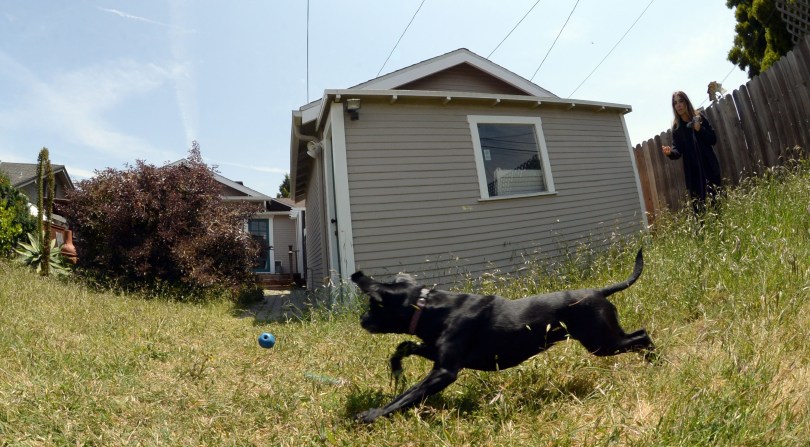
Miriam Filvarof and her husband Ben Maggin are converting their garage in Long Beach, into an apartment. Long Beach recently changed laws allowing accessory dwelling units to be build in he city. April 18, 2019. Long Beach California.
Photo by Stephen Carr
Cities throughout the state jumped at the chance to allow granny flats, including Downey, Fontana, Norwalk, Santa Ana and West Covina. Long Beach, in 2017, also joined in.
The result has been a steady increase in ADUs:
Before restrictions loosened in 2017 – Long Beach’s regulations previously required a property to have more than 7,500 square feet and parking spots for both the primary structure and the granny flat – the city had near-zero rates of applications and construction, said Christopher Koontz, Long Beach’s Planning manager.
As of 2017, however, more than 100 ADU projects have been developed in Long Beach, and about 231 applications have been filed with the city since 2017, many of them issued in Council Districts 7, 8 and 9. About 10% of those applications permitted the legalization of existing units, and the majority of ADUs were created by converting existing structures, according to the city.
That may seem like a small number, considering Long Beach has 73,865 single family homes and permits between 200 and 700 new units (mostly apartments) in any given year.
But, Koontz said, these ADU projects are still significant as a portion of what the city produces each year.
And, he and other experts say, in a city with a 3.8% vacancy rate and rents that have soared 28% in the last decade, accessory-dwelling units provide the city with another tool to increase affordable housing. ADUs are, these officials say, a means for allowing longtime homeowners to age in place, students and the working poor to find relatively cheap places to live, and first-time property owners to get help – by becoming landlords – paying their mortgages.
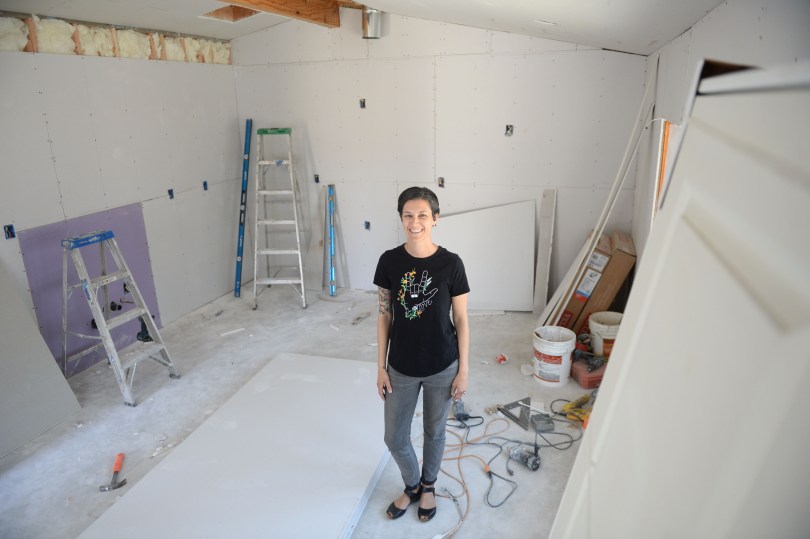
Mandy Haak and her husband have converted their garage in East Long Beach, into a one bedroom apartment. Long Beach recently changed laws allowing accessory dwelling units to be build in he city. The Haak family will rent out the unit for a few years and then it will be occupied by Mandy’s in-laws, who will be moving down from the bay area. April 18, 2019. Long Beach California.
Photo by Stephen Carr
“They are what we call invisible density, because they don’t change what the neighborhood looks like from the street,” Koontz said. “It’s one extra unit. It’s not putting up a big apartment building, but they provide new housing choices that are really important, and they tend to be more affordable.
“They rent for a reasonable amount,” he added, because “they tend to be rented by the homeowner and not by a corporation.”
GETTING A START
Miriam Filvarof and her husband, Ben Maggin, needed help.
They wanted to buy a home, but also didn’t want to be strapped by the mortgage payments. So the young couple – in their mid-30s and with student-loan debt – sought a house with an ADU.
They searched for eight months for a place in Long Beach that had an ADU that could provide supplemental income.
But the couple found that many of the houses they looked at in Long Beach had unpermitted structures, Filvarof said.
“We didn’t want to have to deal with that,” she said. “It was too much of a financial risk for us.”
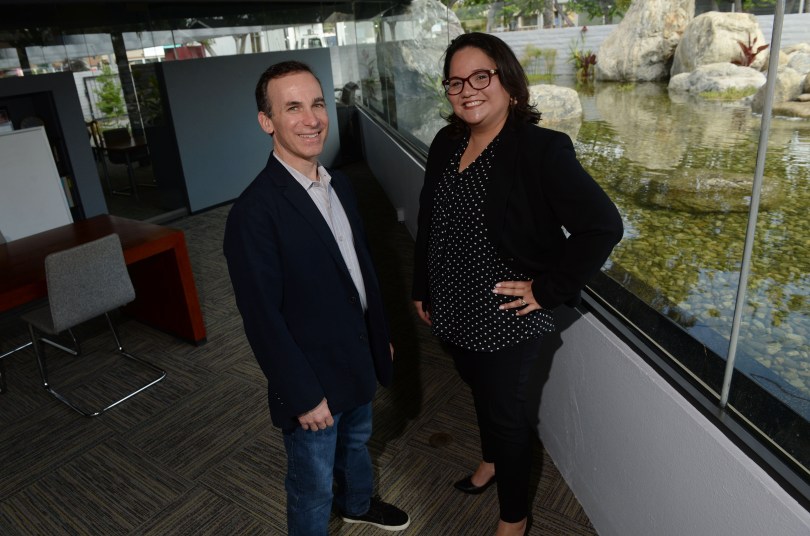
Jeff Jeannette, principal lead architect & designer at Jeannette Architects and associate director of operations at Jeannette Architects Stephanie Osorio. Long Beach recently changed laws allowing Accessory Dwelling Units ( A.D.U.) to be build in he city. Jeannette Architects have designed several throughout the city. April 18, 2019. Long Beach California.
Photo by Stephen Carr
Illegal ADUs, city officials say, can be a health hazard.
Councilman Rex Richardson pointed to the Aviles Law, the policy against illegal conversion the Long Beach City Council created in 2011 after three young girls died in a fire while sleeping in a garage-cum-apartment that had been illegally converted.
“If there’s a housing crisis,” the councilman said, “the production of housing and rethinking how we value housing — and how we offer safe access to housing — is up for discussion now.”
The ADU ordinance the city passed in 2017 allows Long Beach to clean up some of the illegal units that were built in Long Beach, said David Khorram, the Building and Safety Bureau manager for the city’s Department of Development Services.
The city — with help from Jeanette Architects — is also in the process of coming up with a set of garage conversion ADU standards to make it easier for property owners to convert their garage into a living space, he added.
“As long as it is a single-car garage or double-car garage in a residential, single-family situation,” Khorram said, “we’ve been able to put our arms around it and come up with these specific prescriptive standards.”
For Filvarof and Maggin, the looser regulations also allowed them to buy a home in the Rose Park neighborhood and invest $80,000 to convert their garage into a 280-square-foot, fully-furnished studio with an outdoor space.
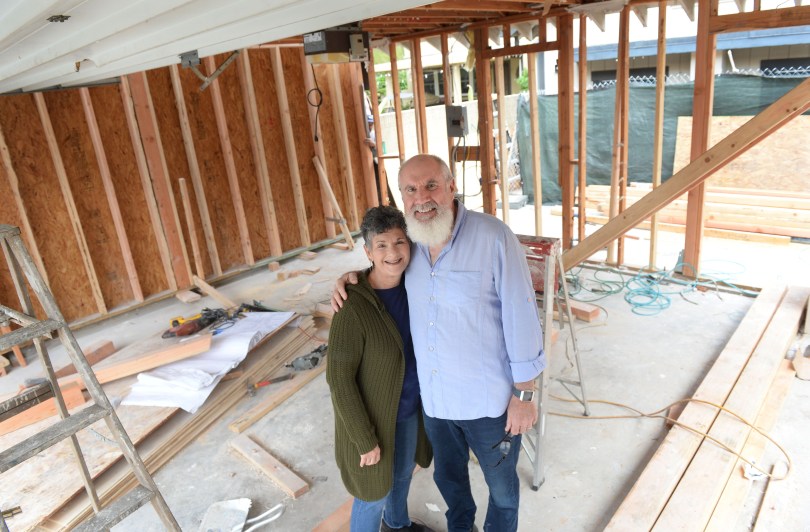
Farley and Cheryl Herzek are converting their garage behind the home they own in Belmont Heights, into an apartment. The two are retired and plan on living in it when completed. Long Beach recently changed laws allowing accessory dwelling units to be build in he city. May 2, 2019. Long Beach California.
Photo by Stephen Carr
“It just makes it so we’re not doing the thing that most people our age are doing, which is running yourselves ragged, working all the time, trying to pay your mortgage,” Filvarof, 35, said. “An ADU just really takes the pressure off.”
And there are others like them that could use the financial help ADUs provide, officials say.
“It’s not the only piece,” Koontz said of ADUs, “but a very important piece of addressing our housing needs.”
THE FUTURE
Long Beach could soon see even more ADUs spring up.
The City Council in April updated its ordinance to lower the minimum total lot size requirement from 5,200 square feet to 4,800 square feet. That move, which affects 5,862 lots, expanded the number of lots eligible to build ADUs by 10%.
Housing advocates have touted the benefits, in a housing crisis, of ADUs. But not everyone is a fan.
The rise of ADUs has brought up concerns within historic districts, where parking is in short supply – and some fear the structures will change the appearance of the neighborhood, Koontz acknowledged.
That prompted city officials to work on a study addressing those issues.
But finding a balance will be a challenge, Koontz added.
“On the one hand, you want to meet the needs of the historic district in look and feel and not make things too massive,” he said. “On the other hand, the (homes) are really small, people have growing families and they have to do additions.”
Long Beach’s neighborhoods are also far from cookie-cutter, he said: Some areas, for example, have plenty of parking while others – like Rose Park – have very little.
“So we’re going to take our time,” Koontz said, “and be thoughtful and get it right.”

Mandy Haak and her husband have converted their garage in East Long Beach, into a one bedroom apartment. Long Beach recently changed laws allowing accessory dwelling units to be build in he city. The Haak family will rent out the unit for a few years and then it will be occupied by Mandy’s in-laws, who will be moving down from the bay area. April 18, 2019. Long Beach California.
Photo by Stephen Carr
A separate study and a progress report will come before the council in the next 60 to 90 days, Koontz said.
But when done well, granny flats allow homeowners to increase the value of their property, and they are a sustainable way to increase affordable housing, said Jeff Jeanette, founder of Jeannette Architects, based in Long Beach.
And they help minimize social inequities.
“There is a way to get into a certain neighborhood that maybe has great schools and great parks,” Koontz said. “Even though you can’t afford to buy your home in that neighborhood, you might be able to rent one of these accessory dwelling units in someone’s backyard.”
Stephanie Osorio, director of operations at Jeanette Architects, echoed that sentiment.
“Rather than silo-ing affordable housing into a whole block,” she said, “it is integrated into the community.”
AGING IN PLACE
Five years ago, Cheryl and Farley Herzek left Long Beach because of a job opportunity for Farley in New York.
They moved to Brooklyn, buying a home with some relatives, but hung onto their Belmont Heights home.
The couple eventually retired. They wanted to spend time with their family in New York – but also wanted to return to Long Beach.
The Herzek’s needed to hang on to the Brooklyn home for their family. Staying in their Belmont Heights home, though, seemed like an ill fit: they’d have to leave the 1,500-square-foot home vacant for long periods of time.
And the retirees didn’t want to take on a hefty mortgage, so buying a condo was out of the question. They also didn’t want to reconnect with friends while also being intrusive or feeling like they were living out of a suitcase by crashing with them.
So they settled on the next best thing: they are currently converting the garage of their Belmont Heights home, which they’ve owned for 31 years, into an ADU – in which they will live when in town.
And renters currently live in the main house.
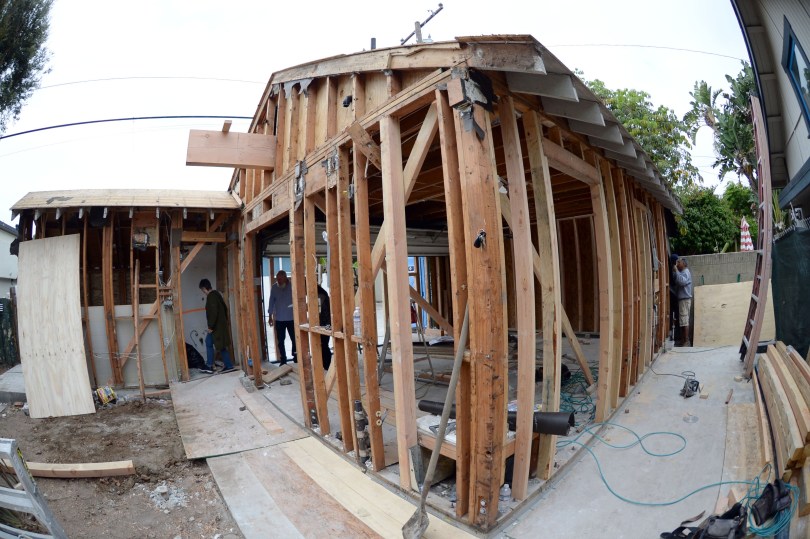
Farley and Cheryl Herzek are converting their garage behind the home they own in Belmont Heights, into an apartment. The two are retired and plan on living in it when completed. Long Beach recently changed laws allowing accessory dwelling units to be build in he city. May 2, 2019. Long Beach California.
Photo by Stephen Carr
The couple expects to finish converting the garage sometime in August, the Herzeks said. The new 478-square-foot studio is estimated to cost $150,000, just $5,000 more than what they paid for their original home more than three decades ago. But, for them, it’s worth it.
“We love it in Long Beach and we want to be here,” Cheryl Herzek, 68, said. “This was the next best thing.”
Koontz, for his part, said the Herzeks aren’t the only retired couple to build an ADU.
“We’ve heard from older couples who are going to build the ADU, live in it and then rent out the big house because it’s too much work for them,” he said. “That allows them to stay here in Long Beach and not move somewhere else for their retirement.”
For those dedicated to solving the housing crisis, Koontz said, ADUs are exciting.
“That story is not as flashy and exciting as what you see on HGTV,” Koontz said. “But I think it is for folks that work in planning and housing.”


Comments are closed.